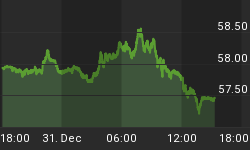Below is an excerpt from a commentary originally posted at www.speculative-investor.com on 7th March, 2010.
It is said that the more things change, the more they stay the same. This is certainly true when it comes to identifying the causes of large increases in the cost of living. Although it can be logically established that a large and sustained increase in the general price level could not occur in the absence of a large increase in the supply of money, and although the historical record confirms that every great "inflation" was preceded by a large increase in the money supply, leading figures in economics and central banking have consistently come up with explanations for broad-based price rises that have nothing to do with the money supply.
A recent example of citing a non-monetary reason for a large decline in the purchasing power of money was the amusing claim by a senior Reserve Bank of Australia (RBA) representative that mining booms cause "inflation". Australia has experienced rapid "price inflation" over the past several years, so the central bankers of that country naturally perceive the need to come up with reasons for price rises that have nothing to do with their own actions. A convenient explanation is the mining boom, because it can be shown that the large gains made by commodity prices are linked in some way to China's rapidly-growing demand for commodities. The idea is that if the mining boom CAUSED Australia's "inflation" problem then the finger of blame for the problem could legitimately be pointed at China!
It was a nice try by the RBA, but the reality is that China's actions -- regardless of what they happen to be -- cannot possibly bring about a substantial decline in the purchasing power of the Australian Dollar. Prices within any economy are continually fluctuating and large localised price rises will sometimes occur in response to unanticipated shortages of, or increases in demand for, some goods and services, but in the absence of a higher money supply a price rise in one part of the economy will have to be offset by a price decline elsewhere.
Not surprisingly, the true explanation for Australia's "inflation" problem can be found in the money supply statistics. During the 9-year period from January-2001 through to January-2010, Australia's M3 money supply** rose 168%. This equates to a compound annual growth rate of around 11.5% and is the sort of money-supply growth that could bring about a doubling in the cost of living.
The true explanation can always be found in the money supply statistics, yet other factors will invariably be blamed. This was certainly the case with regard to the great "inflation" of the 1970s. According to many pundits, the troublesome broad-based rise in prices of the 1970s was set in motion by a series of supply shocks, the most important being the collapse of the Peruvian anchovy harvest in 1972 (anchovies from Peru were processed into fishmeal, a major source of feed for livestock and poultry throughout the world at that time) and OPEC's restriction of oil supply in 1973. Other factors to be cited as causes of "inflation" during the 1970s were the increasingly aggressive demands of labour unions and the Iran Hostage Crisis.
There have always been supply shocks and other disruptions, but these supply shocks have only ever been accompanied by large and sustained losses in money purchasing power when there was also a large increase in money supply. In this respect, the 1970s was no different to any other period of high "inflation". Those who believe in fallacious neo-Keynesian concepts such as "cost-push inflation" and "demand-pull inflation" should explain why the currency never recovers its purchasing power once 'costs stop pushing' or 'demand stops pulling'. Why, for instance, did the US$ fail to recover ANY of the purchasing power it lost during the 1970s after that decade's commodity shortages went away?
Interestingly, even the most spectacular inflationary episode of the past century was blamed on factors other than money-supply growth. We are referring to the Weimar inflation of the early 1920s, the cause of which was held -- by the central bankers at the centre of it -- to be a combination of Germany's war reparations and the activities of foreign speculators. The central bank's rampant monetisation of government debt was, apparently, not relevant.
In conclusion, it's a fact of life in a free or semi-free economy that relative prices will be continually adjusting in response to changes in the supply of and the demand for different goods and services. Therefore, when an "inflation" problem occurs it will inevitably be accompanied by non-monetary events that cause prices to rise sharply in some parts of the economy. These localised price rises will, in turn, create an opening for the central bank and/or the government to point the finger of blame at things that are clearly outside the control of the monetary authorities; however, the propaganda can't work if the populace understands that only an increase in the money supply can bring about a large economy-wide rise in prices.
*When we put quotation marks around inflation it indicates that we are giving the word its popular meaning (a rise in the general price level), as opposed to its correct meaning (a rise in the money supply)
**We don't have TMS (True Money Supply) data for Australia, so we will have to make do with M3.
We aren't offering a free trial subscription at this time, but free samples of our work (excerpts from our regular commentaries) can be viewedat: http://www.speculative-investor.com/new/freesamples.html.
















